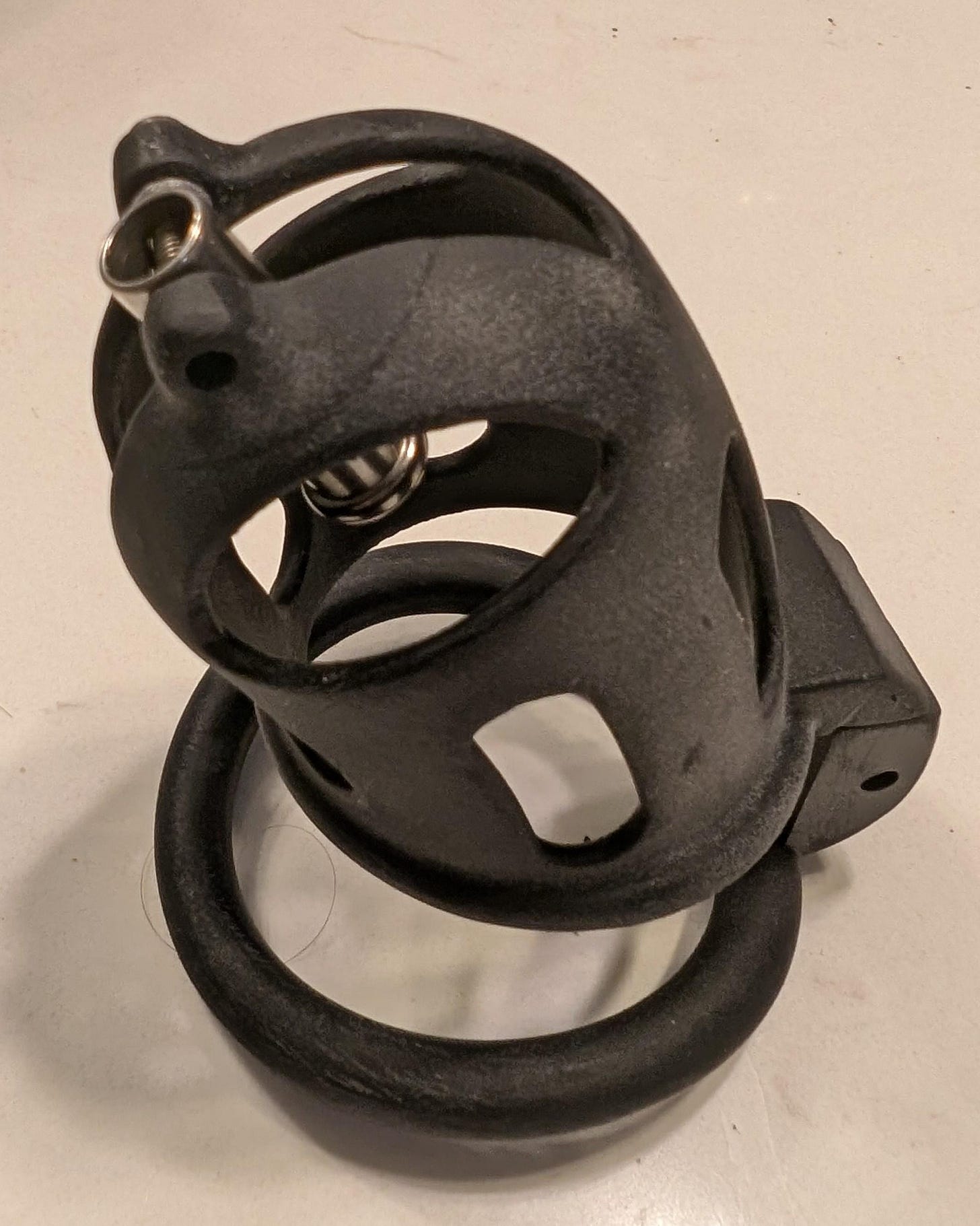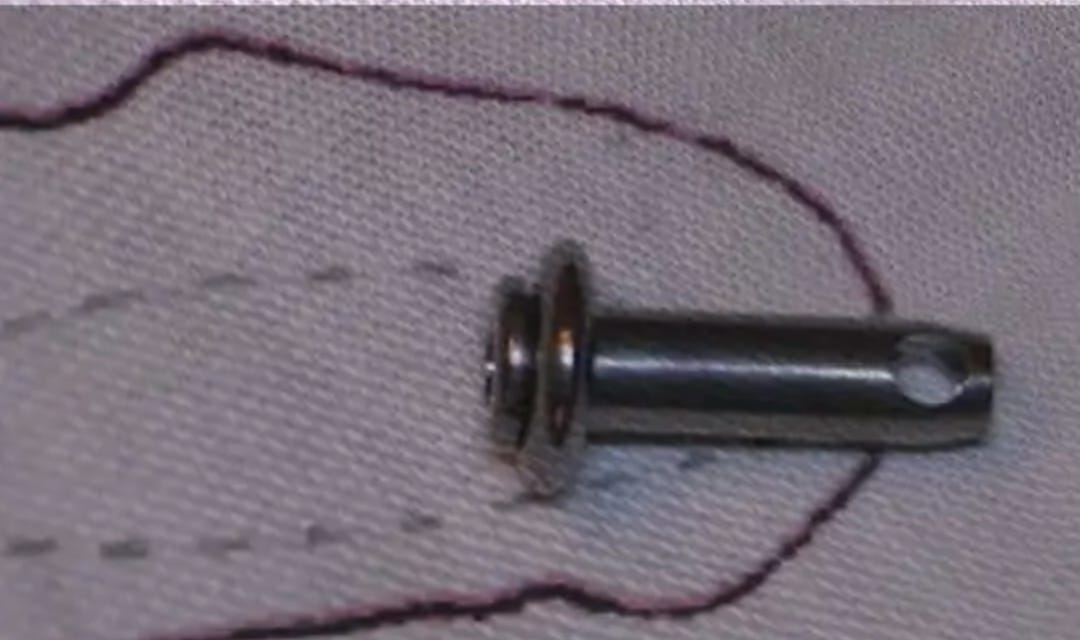Demystifying the Dark Art of Tetherspouts
They really aren't as scary as they sound
Being an avid researcher of any new interest of mine, I discovered tetherspouts fairly early in my chastity journey. I didn’t read too much about them because the thought of putting anything into my urethra wasn’t appealing. But later, when I got more into chastity and Jenn’s response to me getting a PA was something along the lines of “if you ever want me to look at your cock again, you will not be getting a PA”, I dug a little deeper.
So, before the what, why?
There are a few motivations for tetherspouts:
Security – like a PA, your options for getting out involve either destroying the cage, defeating the lock, or tearing tissue you really don’t want to be torn.
A method for enabling shaft-only devices like the Bijou.
Being able to confidently stand to urinate regardless of the cage, something a PA doesn’t often give you.
Ok, great but what are they?
Tetherspouts are a small tube (the spout) and what is basically a washer (the retaining ring) that work together to give you what I like to think of as a prosthetic PA.
Tetherspouts make use of an odd quirk of male anatomy. Just inside the penis is a small ovalular ring of inelastic tissue that your urethra goes though. I don’t know the name of this tissue but the fact that it’s an oval is critical to the mechanics of tetherspouts.
Imagine that little ring of tissue as being the buttonhole on a shirt. Like a shirt, the ring of tissue is oriented vertically. Now imagine the retaining ring as a button. The wearer slides the retaining ring in oriented on its side (where the hole in the retaining ring faces left and right) like a coin going into a vending machine… or a button going into a buttonhole on a shirt. In this orientation, the retaining ring aligns with the semi-major axis (didn’t think you’d ever see that word again, did you) of that little ring of tissue, in other words, the longer vertical axis.
Once inside the urethra, specifically a large open space just inside the glans called the fossa navicularis, the retaining ring is rotated so the hole is facing along the direction of the shaft, again like a button that has been buttoned. In this orientation, it can’t come out because it’s too wide for that tissue.
Now let’s bring the spout into the picture. The spout isn’t just a simple hollow tube. On the end of it there’s a flange and critically that flange is just a bit larger than the hole on the retaining ring. You put the spout in your penis first, flange first. And you push it in all the way so it’s fully inside your urethra. Now, it’s only about an inch long so it’s really just sitting inside the glans. You then do that magic with the retaining ring and when you flip the ring into its “locked” orientation, you slide it onto the spout. And now, you pull the spout out of the urethra and the retaining ring hits the flange and hits that tissue and holds the spout in place.
Congratulations, you now have a (usually titanium) tube sticking out of your penis that can’t be pulled out. Now, if we put a hole through the side of that tube, we have something we can throw some sort of lock on and voila, we have ourselves a prosthetic PA.
Now, to facilitate all of this, floss is generally used. It is threaded through that transverse hole on the spout before the spout is inserted and then both ends pass through the retaining ring. Once everything is inside the fossa navicularis, the floss helps you hold onto everything and helps guide the retaining ring onto the spout. Once the retaining ring is seated, the spout is pulled out by the floss and the floss is then removed and replaced by the lock.
Removal involves basically the reverse starting with threading the floss through the hole, pushing the spout back into the urethra while pinching the glans holding the retaining ring in place. The ring will pop off the spout and then it’s trivial to rotate it and pull the whole thing out with the floss.
With practice, insertion takes about a minute and removal about 30 seconds.
Wait, are you fucking crazy?!?!?
Yes.
Well, no.
A few things… UTIs aren’t really much of an issue here. Of course practice good hygiene by sterilizing everything with isopropyl alcohol (rubbing alcohol) but as the spout goes no deeper than a PA, it’s really very low risk. But to make things a little safer, it’s a good idea to take a leak after installation and after removal as it’s those times where the spout goes the furthest in the penis.
There’s also the fear of the floss breaking. Go ahead and try it. If you can rip a peice of floss in two , you’re stronger than I am and I promise the force it would take to do that, well, your penis would tear first. But regardless, because of the size of the flange and the size of the retaining ring, it’s not going up your urethra. In fact, one of the early frustrations installing the thing is keeping the spout inside your penis while you push in the retaining ring – it keeps wanting to come out.
The legitimate fear, the only issue I’ve ever seen reported with a tetherspout, is the retaining ring becoming fused to the spout by deposits from your urine.
This issue happens when people try to make tetherspouts out of materials other than 316L stainless steel or titanium. In the early days, people we using basically rubber rings. But with proper materials, a tetherspout can be worn indefinitely. I’ve worn one continuously for three weeks and it came out as deposit free as when it went in. Several people report wearing them for months and one user reported wearing his for over a year as part of his permanent chastity usage.
Well hell, why would anyone want a PA?
Just looking at tetherspouts and PAs from a chastity security point of view, tetherspouts have some serious advantages:
They aren’t permanent. You take it out and it’s gone.
You don’t need months of healing and stretching to use them with a cage.
You don’t have an extra hole in your penis that will leak urine.
For the uncut, it makes it far easier to urinate while caged. Well, for anyone really.
But they do have some distinct disadvantages:
You generally have to remove them for penetrative sex.
There are few cages with first-class support for tetherspouts. And while you can slap a padlock or lock collar on the end of a spout to secure it to most cages, the spout being able to move around will cause soreness after a while.
Ok, you’ve piqued my interest. Where can I learn more about this voodoo witchcraft?
The most active place on the internet for discussing tetherspouts is Reddit’s r/tetherspout. Read the pinned post as it has a lot more information.




Another motivation might be if you want to avoid your foreskin interrupting the flow when you pee.
I think I will try it… the concept is very cool